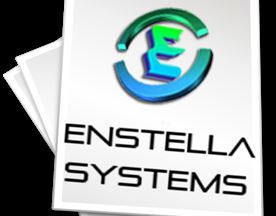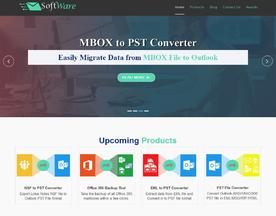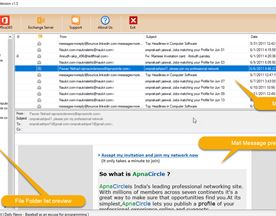What is the difference between reply vs reply all? ‘Reply’ sends your response to the sender only, while ‘Reply All’ sends it to the original sender and all other recipients.
Replying to emails is an essential part of modern communication, and it is crucial to understand the different ways to respond to emails. One of the most common debates in email communication is whether to use the Reply vs Reply All option. While both options may seem similar, they have different purposes and can cause confusion if not used appropriately.

“Reply” is used when the sender wants to respond to the original sender only. It is the most common option used in email communication, and it is suitable for one-on-one conversations. On the other hand, “Reply All” is used when the sender wants to respond to everyone included in the email thread. This option is useful when multiple people are involved in a conversation and need to be kept in the loop.
Using the wrong option can lead to confusion and frustration, especially in a professional setting. For instance, replying to everyone in an email thread unnecessarily can clog inboxes and waste time. In contrast, failing to include everyone in a group conversation can lead to misunderstandings and missed opportunities. Therefore, understanding when to use each option is crucial for effective email communication.
Key Takeaways
- Understanding the difference between Reply vs Reply All is essential for effective email communication.
- Using the wrong option can lead to confusion and frustration, especially in a professional setting.
- It is crucial to use the appropriate option based on the context and the intended audience.
Understanding Email Basics
The Role of Email in Communication
Email has become an essential tool for communication in the modern world. It allows people to send and receive messages, documents, and other important information quickly and easily. Email is widely used in both personal and professional settings, and it has replaced traditional forms of communication such as letters and memos.
One of the key benefits of email is that it allows people to communicate with others regardless of their location. With the click of a button, a message can be sent to someone on the other side of the world. This has made it possible for businesses to operate on a global scale, and for individuals to keep in touch with friends and family who live far away.
Components of an Email
An email typically consists of several components, including the sender, recipient list, subject line, and email composer. The sender is the person who initiates the email, while the recipient list contains the email addresses of the people who will receive the message. The subject line is a brief description of the content of the email, and it helps the recipient to understand what the message is about before they open it.
The email composer is where the message itself is written. It can include text, images, and attachments such as documents or pictures. The composer usually includes formatting options such as bold, italic, and underline to help the sender convey their message more effectively.
It is important to note that when sending an email to multiple recipients, there are two options: reply vs reply all. Reply will only send a response to the original sender, while reply all will send a response to all recipients on the original email. It is important to use these options carefully to avoid sending unnecessary messages to people who do not need to receive them.
For more information on email basics, check out this resource.
Reply vs Reply All
When it comes to responding to emails, there are two options: reply vs reply all. While they may seem similar, there are important differences between the two. This section will explore the definition and differences between reply vs reply all, as well as when to use each option.
Definition and Differences
Reply vs reply all are both options for responding to an email. However, reply sends a response only to the sender of the original email, while reply all sends a response to the sender and all other recipients of the original email.
The main difference between the two is the scope of the response. Reply is best suited for when the response is only relevant to the sender, while reply all is best suited for when the response is relevant to all recipients of the original email.
When to Use Reply
Reply should be used when the response is only relevant to the sender of the original email. This could include thanking the sender for the email, asking a question that only the sender can answer, or providing a personal update.
It is important to note that using reply when a response is relevant to all recipients can lead to confusion and missed information. In these cases, it is best to use reply all.
When to Use Reply All
Reply all should be used when the response is relevant to all recipients of the original email. This could include providing an update that all recipients need to be aware of, asking a question that all recipients can answer, or providing a group response to a question or comment.
It is important to use reply all sparingly and only when necessary. Overuse of reply all can lead to cluttered inboxes and unnecessary emails.
It is also important to be mindful of email chains and threads when using reply all. It may be more appropriate to start a new email thread or create a separate email chain for the response.
For more information on when to use reply vs reply all, check out this article from Business Insider.
Overall, understanding the differences between reply vs reply all is important for effective communication via email. By using each option appropriately, recipients can avoid confusion and ensure that important information is shared with all relevant parties.
Email Etiquette
Email is a widely used communication tool in the modern world. However, it is important to remember that email communication is not the same as face-to-face communication. The lack of non-verbal cues and tone of voice can often lead to misunderstandings. Therefore, it is important to follow proper email etiquette to ensure effective communication.
The Importance of Etiquette
Email etiquette refers to the guidelines and principles that should be followed while composing and sending emails. Following proper email etiquette not only ensures effective communication but also helps to maintain a professional image. It is important to be respectful and courteous in all email communications.
CC and BCC Usage
CC (Carbon Copy) and BCC (Blind Carbon Copy) are two features that are commonly used in email communication. CC is used to include additional recipients in an email, while BCC is used to send an email to multiple recipients without revealing their email addresses to each other. It is important to use CC and BCC appropriately to avoid unnecessary clutter in inboxes and to respect the privacy of others.
Privacy and Transparency
Emails can contain sensitive information, and it is important to ensure that this information is not disclosed to unauthorized individuals. It is essential to be transparent about the information being shared and to use appropriate security measures when sharing sensitive information. When sending emails, it is important to double-check the recipient list to ensure that the email is being sent to the correct individuals.
Following proper email etiquette is essential for effective communication and maintaining a professional image. For more information on email etiquette, check out this resource on email etiquette.
Effective Email Communication
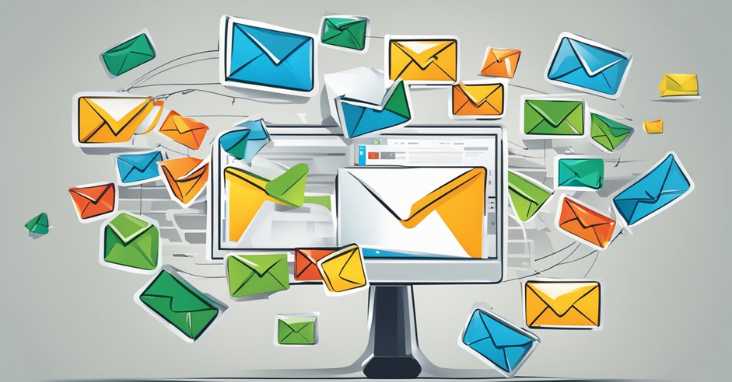
Email has become an essential tool for communication in today’s world. It is an efficient way to send messages to colleagues, clients, and friends. However, effective email communication requires more than just typing up a message and hitting send. In this section, we’ll cover some tips for crafting clear messages, proofreading and professionalism, and avoiding miscommunication.
Crafting Clear Messages
Crafting clear messages is essential in effective email communication. When sending an email, it is important to be clear and concise. The message should be easy to read and understand. Using proper grammar, punctuation, and sentence structure can help make the message more readable. Additionally, using bullet points or numbered lists can help break up the text and make the message more scannable.
Proofreading and Professionalism
Proofreading is an essential step in effective email communication. Before hitting send, it is important to proofread the message for spelling and grammar errors. This can help ensure that the message is professional and easy to read. Additionally, it is important to use a professional tone in the email. Using proper salutations and signatures can help make the message more professional.
Avoiding Miscommunication
Miscommunication can occur when sending emails. To avoid miscommunication, it is important to be clear and concise in the message. Additionally, it is important to avoid using jargon or acronyms that the recipient may not understand. If necessary, it may be helpful to provide additional context or clarification in the message.
Overall, effective email communication requires clear and concise messages, proofreading and professionalism, and avoiding miscommunication. By following these tips, you can ensure that your emails are effective and efficient. For more information on effective email communication, check out this article from Inc.
Managing Email Threads
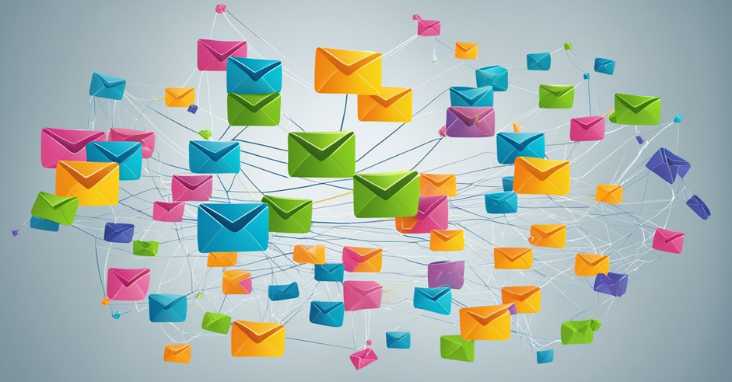
Email threads can quickly become overwhelming if not managed properly. Inboxes can be flooded with irrelevant messages, and conversations can become confusing. This section will cover some tips on how to manage email threads effectively.
Keeping Conversations Relevant
One of the biggest challenges in managing email threads is keeping conversations relevant. It can be easy for people to get off-topic or for conversations to branch off into multiple threads. To avoid this, it is important to stay focused on the original topic and to keep replies concise and to the point.
One way to do this is to use bullet points or numbered lists to clarify specific points. This helps to break down complex information into smaller, more manageable pieces. Additionally, using bold or italicized text can help to emphasize important information and make it stand out.
Handling Mass Emails
Mass emails can be a major source of clutter in inboxes. It is important to determine whether a mass email is relevant before hitting reply-all. If the email is not relevant, it is best to delete it or move it to a separate folder.
If a reply-all is necessary, it is important to keep the message concise and to the point. Additionally, it is important to avoid using reply-all for personal messages or messages that are not relevant to the entire group.
Email Thread Hygiene
Email thread hygiene refers to the practice of keeping email threads organized and easy to follow. This can be achieved by using descriptive subject lines and by including only relevant information in the email. It is also important to avoid including large attachments or unnecessary images, as these can slow down email threads and make them difficult to follow.
To keep email threads organized, it is important to use the reply function instead of starting a new thread. This ensures that all messages related to a specific topic are kept together in one thread. Additionally, it is important to avoid changing the subject line unless the topic of the conversation has changed significantly.
For more information on managing email threads, check out this article from TechRepublic.
Email Strategies for the Workplace

Email communication is an essential part of the modern workplace. It is an efficient way to communicate with colleagues, clients, and vendors. However, it is important to use email effectively and efficiently. Here are some email strategies for the workplace that can help improve productivity and ensure open communication.
Internal Communications
When communicating with colleagues, it is important to use the “Reply All” function sparingly. This function sends the email to everyone in the email chain, which can quickly clutter inboxes and lead to confusion. Instead, consider using the “Reply” function when responding to an email that does not require input from everyone on the email chain.
Scheduling and Updates
Email is a useful tool for scheduling meetings and providing project updates. When sending out company-wide emails, be sure to use a clear subject line and keep the body of the email concise. This will help ensure that everyone reads the email and understands its importance. Additionally, consider using a scheduling tool, such as Calendly or Doodle, to simplify the process of scheduling meetings.
Handling Personal Matters
While email is primarily used for work-related communication, it is also important to use it for personal matters when necessary. However, it is important to keep personal emails separate from work-related emails. Consider creating a separate email account for personal matters to avoid cluttering your work inbox.
Overall, effective email communication is essential for workplace productivity and open communication. By using the appropriate email functions and keeping emails concise and clear, individuals can improve their email communication and streamline their work processes.
For more information on effective email communication, check out this article on Harvard Business Review.
Email Platforms and Features
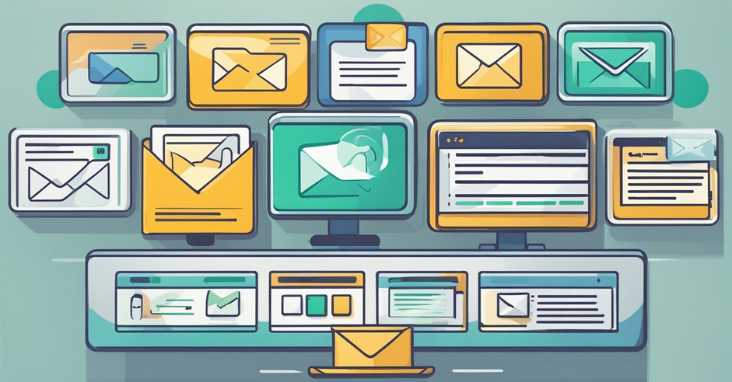
Popular Email Services
There are several popular email services available, including Gmail, Outlook, Yahoo, and more. Each service offers unique features and capabilities, but they all have one thing in common: the ability to reply vs reply all.
Gmail, for example, allows users to reply to an email chain by clicking the reply button. This will send a response to the original sender of the email. If the user wants to include everyone in the chain, they can click the reply all button instead. This will send a response to everyone who was included in the original email.
Outlook offers similar features, allowing users to reply vs reply all to an email chain. Yahoo also has these capabilities, as do most other email services.
Advanced Email Features
In addition to the basic reply vs reply all features, many email services offer more advanced capabilities. For example, some services allow users to forward emails to others, or to schedule emails to be sent at a later time.
Another advanced feature is the ability to recall an email. This can be useful if a user accidentally sends an email with incorrect information or to the wrong person. By recalling the email, the user can prevent the recipient from seeing the message.
Email services also offer various ways to protect personal information. For example, many services allow users to encrypt their emails, ensuring that only the intended recipient can read the message.
Overall, email services offer a variety of features and capabilities for users to communicate effectively. By understanding these features, users can make the most of their email experience.
For more information on email platforms and features, check out this resource with a comprehensive list of popular email providers and their features.
Frequently Asked Questions

What are the implications of using Reply All in an email conversation?
Using Reply All in an email conversation can have significant implications, particularly in a group email. It can lead to unnecessary clutter in the inboxes of all recipients, and it can also expose email addresses of all recipients to everyone on the email thread. This can be a privacy concern, especially if the email is sent to a large group of people.
How does Reply differ from Reply All in the context of email CC recipients?
When using Reply, the email is only sent to the original sender of the email. On the other hand, when using Reply All, the email is sent to all recipients of the original email, including any CC recipients. This can lead to confusion or unnecessary responses if CC recipients are not meant to be included in the conversation.
What should be considered before choosing to Reply All in a group email?
Before choosing to use Reply All in a group email, it is important to consider the relevance of the response to all recipients. If the response is only relevant to the original sender, then using Reply All can create unnecessary clutter in the inboxes of other recipients. Additionally, if the email contains sensitive or confidential information, using Reply All can expose that information to unintended recipients.
In what scenarios is it more appropriate to use Reply vs Reply All?
It is more appropriate to use Reply vs Reply All when the response is only relevant to the original sender of the email. This can help prevent unnecessary clutter in the inboxes of other recipients and can also help maintain the privacy of email addresses.
How does using Reply All affect BCC recipients in an email?
When using Reply All, BCC recipients are not included in the response. This is because BCC recipients are not visible to other recipients of the email. Therefore, if the response is relevant to BCC recipients, it is important to use Reply vs Reply All.
What is the etiquette for using Reply vs Reply All in a professional setting?
In a professional setting, it is important to use discretion when choosing between Reply vs Reply All. It is generally considered appropriate to use Reply when the response is only relevant to the original sender, and to use Reply All when the response is relevant to all recipients. Additionally, it is important to consider the sensitivity of the information being shared and to avoid using Reply All if it could compromise the privacy or security of any recipients.
For more information on email etiquette, visit this resource.
Compare hundreds of Email Management Software in our Software Marketplace






